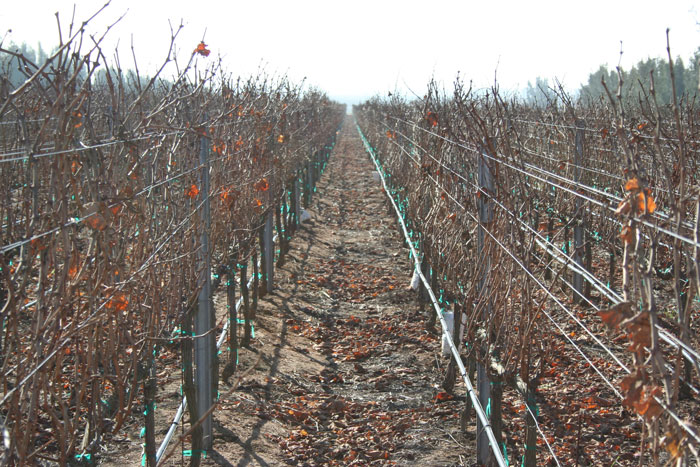
In just about every case, infection with fungi that cause yield-robbing trunk diseases is more a matter of when rather than if in California vineyards.
These diseases include Esca, Botryopshaeria dieback (also known as Bot canker, the most common and widespread trunk disease in California and one of the most aggressive trunk pathogens), Eutypa dieback and Phompis dieback. Although caused by different types of fungi, these diseases share several common symptoms – dead spurs, stunted shoots and zones of rotten wood inside the trunk, called cankers. In fact, usually, more than one of these pathogens can be found in a vineyard.
“Trunk diseases are the major cause of decline in production of older vineyards, and all of them have some level of infection,” says Larry Bettiga, University of California Cooperative Extension farm advisor for Monterey, San Benito and Santa Cruz Counties.
Infection can occur in vineyards of all ages. However, because it can take a number of years before the cankers grow large enough to restrict the flow of water and nutrients, symptoms may not be noticeable until vines are five to seven years or older.
Trunk diseases tend to be more prevalent in some areas than others, notes Bettiga, who once worked in the San Joaquin Valley. “Botryosphaeria dieback is found more often in drier, hotter regions, such as the southern San Joaquin Valley. Farther north, especially in the North Coast area, we see a lot more Eutypa than the other dieback diseases. Sometimes, apoplexy, a severe Esca symptom that can cause the sudden dieback of entire shoots, appears in the San Joaquin Valley. But, I’ve rarely seen it in the Central Coast.”
The structures that produce spores overwinter in the diseased woody parts of vines. These spores, which move with water splash or air currents, are released by rain in the fall, winter and spring. Moved by water splash or air currents, they enter the vine through pruning wounds, which may remain susceptible to infection for several weeks after pruning. Once in the wound, the pathogen establishes a permanent, localized wood infection and cannot be eradicated with fungicides.
“We recommend taking steps to prevent trunk diseases when vineyards are very young,” Bettiga says. “Prune late in the dormant season, preferably February or later.”
The idea is to avoid leaving the vine vulnerable to high spore loads released from the first fall rains, he notes. Also, pruning wounds made then take longer to heal than those made in late dormancy when warmer temperatures encourage more vine growth and faster healing.
Keep in mind that wounds from pruning cuts made to canes or larger cuts made to re-position/re-orient spurs also provide an opening for fungi to enter the vine.
Bettiga advises continuing these pruning practices even in diseased mature vineyards. Because wood cankers are very localized, the more wounds you protect, the fewer new cankers that develop each year. That, in turn, means fewer dead spurs, arms or canes over time.
Treat wounds with a protectant, such as a registered fungicide or an organic sealant material. Because a vineyard may be infected with more than one type of trunk disease, Bettiga recommends combining fungicide products with different modes of action for a broader spectrum of control.
Also, don’t delay treatment. “As soon as you finish pruning a block, treat it that same day,” he says.
Once a vine becomes infected with a trunk diseases, the only way to control the disease is to cut out infected parts of the vine and re-train it.
“If you catch the disease early enough before it progresses too far down the trunk, you can cut off infected parts of the cordon or prune infected wood from the trunk until you get to clean wood,” he says. “Then, re-train new cordons or trunks as needed to maintain production.”
Also, be sure to remove diseased, woody debris from the vineyard and destroy it.
More information on controlling trunk diseases is available online at www.ipm.ucdavis.edu.
About the Author(s)
You May Also Like




